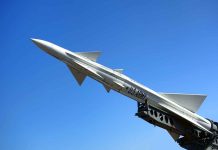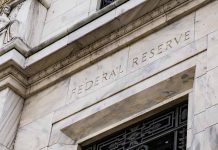
SoftBank Group’s CEO Masayoshi Son pledges $100 billion investment in U.S. AI infrastructure, targeting 100,000 new jobs, but questions linger about feasibility and impact.
At a Glance
- SoftBank CEO Masayoshi Son announces $100 billion investment in U.S. AI infrastructure
- Investment aims to create 100,000 jobs during Trump’s second term
- Pledge follows previous $50 billion commitment from 2016
- Concerns arise about funding sources and job creation potential
- Trump administration signals shift towards deregulation in tech sector
SoftBank’s Bold AI Investment Strategy
In a significant move that has caught the attention of both the tech and political worlds, SoftBank Group’s CEO Masayoshi Son has announced a staggering $100 billion investment in U.S.-based artificial intelligence (AI) infrastructure. This ambitious plan, revealed during a visit to President-elect Donald Trump’s Mar-a-Lago residence in Florida, aims to create at least 100,000 jobs in the United States over the course of Trump’s second term.
The announcement marks a doubling down on SoftBank’s previous commitment. In 2016, Son pledged $50 billion in U.S. investments with the goal of creating 50,000 jobs. This new initiative reflects Son’s increased confidence in the U.S. economy following Trump’s re-election.
“This historic investment is a monumental demonstration of confidence in America’s future, and it will help ensure that artificial intelligence, emerging technologies and other industries of tomorrow are built, created and grown right here in the U.S.A.,” said Trump.
Trump and Softbank's CEO announce $100 billion investment in US projects with goal of creating jobs focused on AI and related infrastructure https://t.co/Jjges0i13b
— CNN (@CNN) December 16, 2024
Funding Sources and Job Creation Concerns
While the investment pledge is substantial, questions remain about how SoftBank will finance this massive undertaking. As of September 30, the company reported $27 billion in cash, significantly less than the promised $100 billion. Speculation suggests that funding may come from various SoftBank-controlled sources, including the Vision Fund, capital projects, or Arm Holdings.
“This is double of last time, as President Trump said, because I say, ‘Oh, President Trump is a double-down president. I’m going to have to double down,’” said Son at the announcement.
The effectiveness of SoftBank’s previous investment in job creation remains unclear, with some funds going to smaller companies like the now-bankrupt WeWork. This raises concerns about whether the new investment will meet its ambitious job creation targets, especially considering the uncertain impact of AI on employment.
Trump Administration’s Tech Stance
President-elect Trump has embraced SoftBank’s investment as a vote of confidence in America’s technological future. He plans to repeal President Joe Biden’s AI executive order from 2023, signaling a shift towards deregulation in the tech sector. The appointment of David Sacks as the White House AI and cryptocurrency czar further underscores Trump’s focus on emerging technologies.
Trump has been engaging with tech leaders like Tim Cook and Sundar Pichai, and plans to meet with Jeff Bezos. The President-elect noted a shift in attitude from tech executives, claiming they are more supportive in his second term. This collaboration between the administration and tech giants could potentially accelerate technological advancements in the U.S.
SoftBank’s Vision and Global Impact
SoftBank, founded by Masayoshi Son in the 1980s, has evolved from a telecommunications company into a global tech investor. With investments in numerous Silicon Valley startups and major companies like Arm and Alibaba, SoftBank’s influence in the tech world is substantial. The Vision Funds, backed by international stakeholders including Saudi Arabian and Abu Dhabi sovereign wealth funds, continue to drive diverse tech investments.
This latest commitment underscores SoftBank’s strategic focus on AI development and its anticipated influence across numerous industries. However, as the company pushes forward with its ambitious plans, the tech world watches closely to see if this massive investment will indeed revolutionize U.S. AI infrastructure and deliver on its job creation promises.
Donald Trump and SoftBank CEO Masayoshi Son pledge a $100 billion investment in the US, echoing a similar commitment made in 2016. The funds will be used to bolster #AI and related infrastructure. Read: https://t.co/82SGyEbo0a pic.twitter.com/yz6s8uDn8D
— Reuters Business (@ReutersBiz) December 17, 2024






















